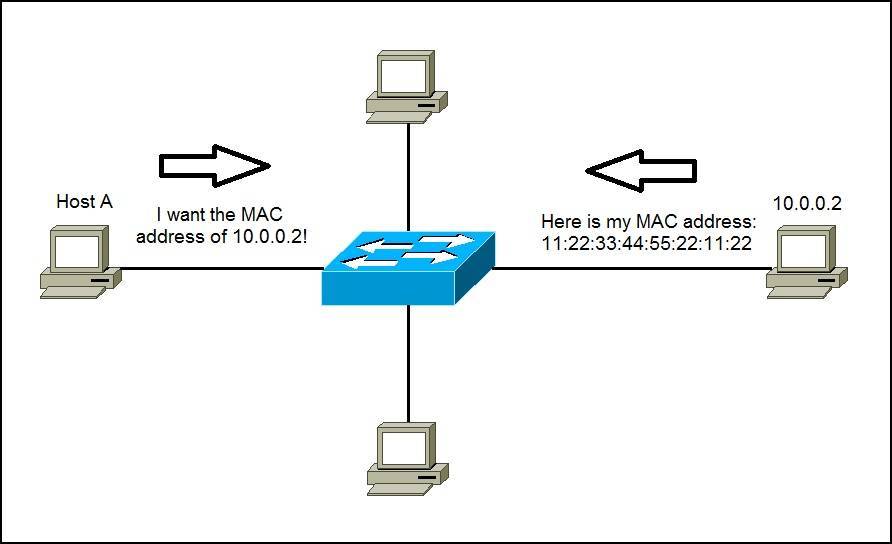Address Resolution Protocol (ARP)
Address Resolution Protocol (ARP) is a network protocol used to find the hardware (MAC) address of a host from an IP address. ARP is used on Ethernet LANs because hosts that want to communicate with each other need to know their respective MAC addresses. It is a request-reply protocol; ARP request messages are used to request the MAC address, while ARP reply messages are used to send the requested MAC address.
Consider the following example:
Host A wants to communicate with the host with the IP address of 10.0.0.2. Host A doesn’t know the MAC address of the host with that IP address, so it will send an ARP request, requesting the MAC address. Because the ARP request is sent to the broadcast address, the switch will flood the request out all interfaces. Every device on the LAN will receive the request, but only the device with the IP address of 10.0.0.2 will process it and send an ARP reply message, listing its MAC address. Host A will receive the reply and the communication between the two devices can be established.
Hosts store the ARP results, keeping the information in their ARP cache. Each time a host needs to send a packet to another host on the LAN, it first checks its ARP cache for the correct IP address and matching MAC address. The addresses will stay in the cache for a couple of minutes. On Windows, you can display the content of the ARP cache by using the arp -a command:





